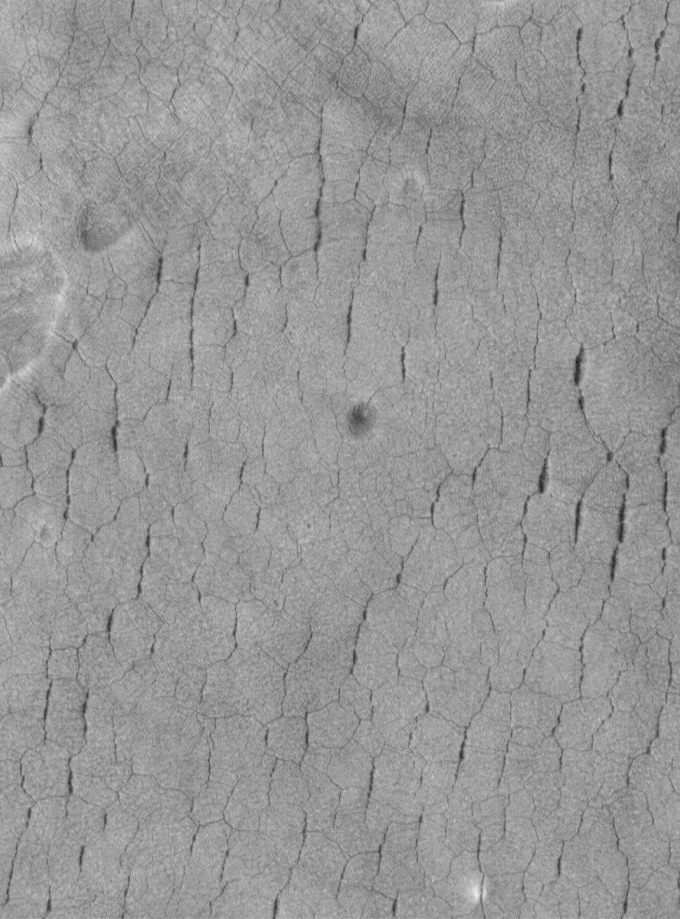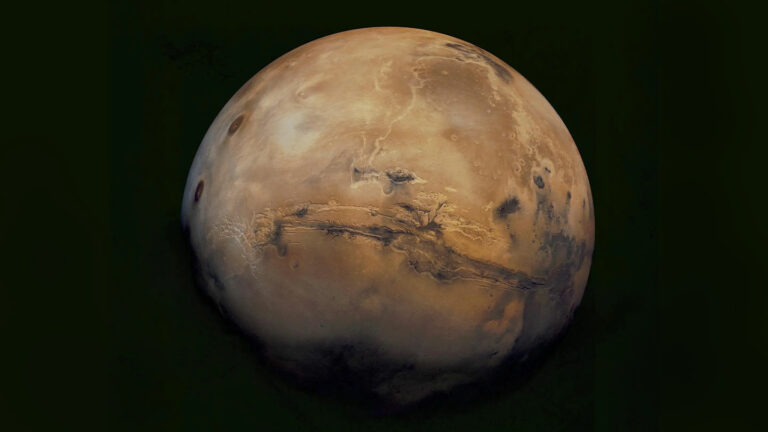Beneath Mars’ terrain lies the potential existence of expansive polygonal rock formations.
Radar unveils landscapes that could provide insights into the historical climate shifts on Mars.
Ground-penetrating radar data suggests that extensive polygonal rock patterns are situated dozens of meters beneath Mars’ surface. Researchers reported on November 23 in Nature Astronomy that similar patterns, observed in Earth’s polar regions when icy sediments cool and contract, might have formed on Mars near its dry equator through a comparable process.

JPL/NASA, MALIN SPACE SCIENCE SYSTEMS
If this holds true, the finding implies that Mars’ equator was significantly wetter and icier, resembling a polar region, during the formation of these polygons 2 to 3 billion years ago. Planetary scientist Richard Soare of Dawson College in Montreal, not involved in the study, notes that buried polygons at this depth have not been reported on Mars, emphasizing the potential of using ground-penetrating radar to explore ancient polygonal terrain and gain insights into Mars’ climate history.
On Earth, polygonal terrain forms in cold climates as sharp temperature drops cause icy ground to contract and crack open. These thermal fractures, initially small, can fill with ice, sand, or a mix of both, creating “wedges” that prevent the cracks from healing and gradually expanding over time through multiple freeze-thaw cycles. The presence of polygonal ground suggests icy conditions during the formation of these patterns.
Despite the unconventional location of the Chinese Zhurong rover’s landing site, Utopia Planitia, near Mars’ equator in a dry, sandy dune field, large polygons approximately 70 meters across have been observed. These are surrounded by wedges nearly 30 meters wide and tens of meters deep, about ten times larger than typical polygons and wedges on Earth. Soare speculates that the structures on Mars may have formed differently than ice-wedge polygons on Earth.
Study coauthor Ross Mitchell, a geoscientist at the Institute of Geology and Geophysics, suggests that forming polygons near Mars’ equator is currently impossible. He believes that the region must have been colder and wetter in the past, similar to a polar region. Changes in Mars’ axial tilt could explain such climate shifts, with simulations indicating extreme tilts causing more direct sunlight at the poles and freezing conditions at the equator. Finding potential polygons buried near the Martian equator provides significant evidence supporting the notion of substantial variations in Mars’ axial tilt throughout its history. Mitchell emphasizes that if Mars’ axis has undergone frequent swings, the planet’s climate would be far more dynamic than previously thought, challenging the perception of every planet, other than Earth, as lifeless.
This article is republished from ScienceNews under a Creative Commons license. Read the original article.
Do not forget to share your opinion with us to provide you with the best posts !




0 Comments